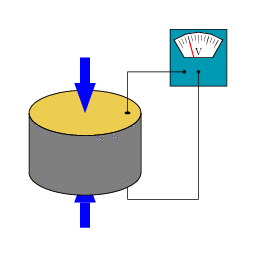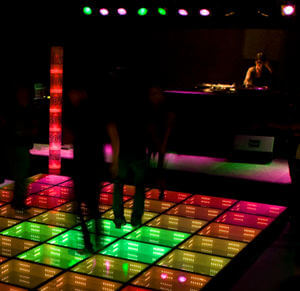Energy Harvesting: Pavegen and the Rise of Kinetic Tile Tech

Kinetic floor tiles capture energy generated when people walk on them. They are the latest technology when it comes to energy harvesting from innovative sources. The tiles transform your footsteps into electricity which can power everything from street lighting to interactive adverts.
Who is Pavegen?
Pavegen, a British company, started pioneering this technology in 2008. Since then, they have taken several strides into making kinetic tiles a reality.
Walking on the tiles feels like walking on astroturf or an athletic track because as you step on them each tile flexes by about 5 millimetres, which is enough to make electricity that can be used right away or stored in a battery for later use.
In terms of energy production output, kinetic tiles generate between 2 and 8 watts per step. This is particularly remarkable when you take into account that each step lasts about half a second.

Pavegen came up with their first prototype piezoelectric kinetic tile in 2008. Eight years later, they have improved on the design by moving over to a triangular shape to maximise performance.
What is Piezoelectricity?
Many kinetic tiles work because of the scientific principle of piezoelectricity. When an object is subjected to mechanical pressure (i.e: something steps on it) it creates an electrical current. We have known about this since the Victorian era discovery by Jacques and Pierre Curie, but it is only now that we are applying the concept to flooring.

Turning a subtle scientific principle into an actual product was quite the challenge because the crux of the technology lies in being able to absorb the energy of a single human step efficiently. With each step lasting just half a second, that is no mean feat.
Pavegen has found a way to turn successive steps into a steady electrical current thanks to a design that combines piezoelectricity with a flywheel that uses electromagnetic induction and inertia to maximise electricity generation. Finally, the triangular shape allows the same amount of potential energy to be transferred no matter where you step on the tile.
Energy Harvesting Uses for Kinetic Tiles
Pavegen has successfully kinetified two neighbourhood football fields, one in Brazil and the other in Nigeria. In each case, the kinetic tiles work hand in hand with solar panels to power the football field floodlights.
Back in 2013, Pavegen installed its kinetic tiles on the final stretch of the Paris Marathon1 which resulted in 40,000 runners generating 7kWh as they raced to the finish line. While this past May, kinetic tiles were the star of the show at the prestigious Chelsea Flower competition powering the winning garden while enhancing the harmony of the floral design. Pavegen have also been awarded Digital Agenda award, alongside Bulb Energy, for contributions to smart city technology.
Foot traffic is key to using this technology effectively. School corridors, airport terminals, a corner of Oxford Street and a French train station in Saint-Omer are just a few of the 200 places dotted across more than 30 countries where you can see kinetic tiles in action.
A revolution without dancing is not a revolution worth having.

A growing number of companies are interested in energy-generating flooring. Energy Floors is a Dutch company that did the flooring for Club Watt in Rotterdam making it the first sustainable dance floor in the world, saving the club 30% on its electric bills. One wonders how many kilowatts John Travolta would have left on the dance floor if kinetic tiles had been available in Saturday Night Fever.
Energy-generating flooring is only the beginning. An Italian company is currently working on speed humps that generate electricity as cars drive over them. With traffic from 400 vehicles a day, the Lybra Speed Absorber can put out a whopping 6GWh a year which is just as much energy as a full-size wind turbine.
Both kinetic tiles and speed absorbers have one thing in common: their captured energy is primarily for nearby use. Street lighting, digital advertising displays, projectors or charging stations could all benefit from this technology. These things we take for granted wouldn’t need to be connected to the power grid anymore and they could be completely self-sufficient.
How Much do Kinetic tiles cost?
Like all cutting-edge technologies, kinetic tiles are relatively expensive. Today, they cost £80 per square foot which means that installing the tiles in the average kitchen would come close to £6000.
Kinetic tiles also currently have a lifespan of just five years, making it difficult to recoup the cost. Even if you are repaving Trafalgar Square or the O2 Arena before a U2 concert, you wouldn’t come close to breaking even for the time being.

However, the cost per square foot is quickly coming down. Nine years ago it was an eye-watering £1,700, however in 2018 it has dropped to below £100.
We believe that it is possible for Pavegen to get it to under a fiver per square foot by the end of the next decade, giving that laminate your dad put down in the extension a run for its money. Once the cost price has reached a realistic number, kinetic tiling would represent a far more worthwhile investment and a viable option for many public spaces.
The Future of Smart Flooring
In the near future, piezoelectric technology in the form of kinetic tiles, smart speed absorbers and reactive flooring could power your day to day life: roads, paths, public transport, and more.

Electricity from smart flooring can work hand in hand with other renewable resources such as solar and wind by compensating for their vulnerability to changing weather. Multiplying the number of simultaneous renewable energy sources is crucial if we want to make the future green.
While, unlike solar, wind and hydropower large-scale kinetic flooring does not make sense. We can get the most out of kinetic floor tiles by using them in specific high traffic areas to power nearby equipment according to demand.
Smart Cities: Self-Sufficient Essentials
Electricity-generating flooring is a key component of smart city concepts. According to EDF, a dozen tiles could power a street lamp for a whole night. By strategically placing kinetic tiles in key areas of a city, you could have on-demand lighting, mobile phone charging stations at bus stops and interactive displays powered by foot traffic alone which would also make them energy efficient.
When it comes to the 6 million street lamps dotted across the UK, kinetic tiles have the potential to make much of their 5.5TWh yearly electricity consumption, which ties up about 1% of the national grid, a thing of the past. Adopting this technology would also prevent about 50,000 tons of CO2 entering the atmosphere and make street lighting impervious to power cuts because it would be self-sufficient.
Commercial Uses: Footsteps Mean Money
Kinetic tiles also have surprising commercial applications in retail spaces. Energy generated by shoppers doing their groceries or checking out the latest trend is worth more than you might think.
In the future, your steps around your favourite shop can be turned into digital currency thanks to kinetic floor tiles and can add up to discounts when you go up to the till.
Conversely, retailers could link these smart floors to a store app tracking where shoppers go to incentivise people individually. For example, they could send personalised notifications such as “Walk over to our new seasonal vegetable section and get 20p off your next purchase”.
A Smarter, Greener Future
Kinetic tiles and smart speed absorbers can help reduce our energy footprint as more and more people are slated to move into cities (66% of the world population by 2050 according to the UN).

In the coming decades, the green energy potential of smart surfaces will be multiplied when they can draw from more than one kind of renewable energy at a time. A kinetic floor tile that also housed a bendable solar panel could be 66% as efficient as a standard solar panel but could also continue generating electricity when the sun went down. This is not science fiction, a French company called Wattway is working on solar roads that could soak up the sun’s energy 90% of the day.
With renewable energy, the sky (and the ground) are the limit of what we can do, whether making a customer take an extra step that brings an extra sale or powering LED street lamps virtually anywhere. We already have the technology to make it happen.
Sources
1 Coupe du Monde 2018 : quel joueur aurait produit le plus d’électricité?, selectra.info, Arthur Le Menec